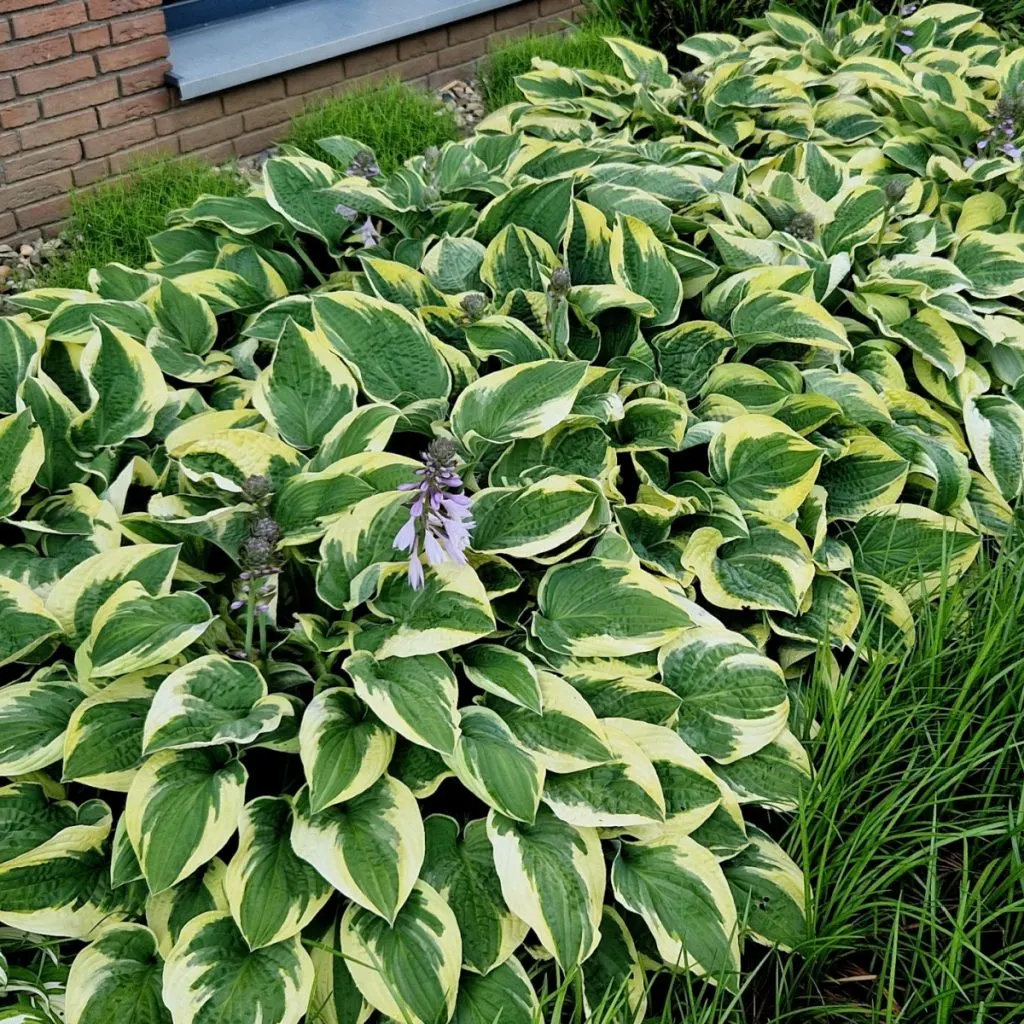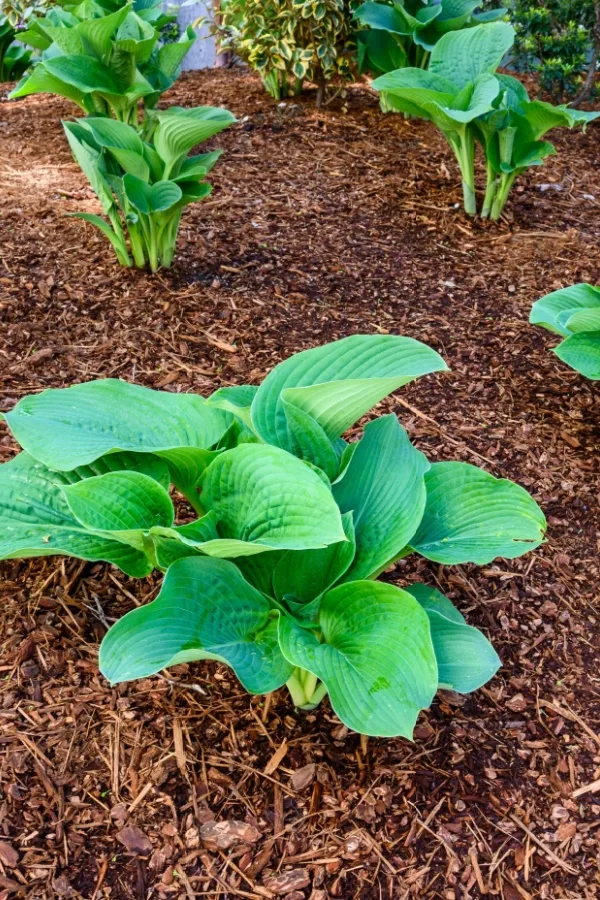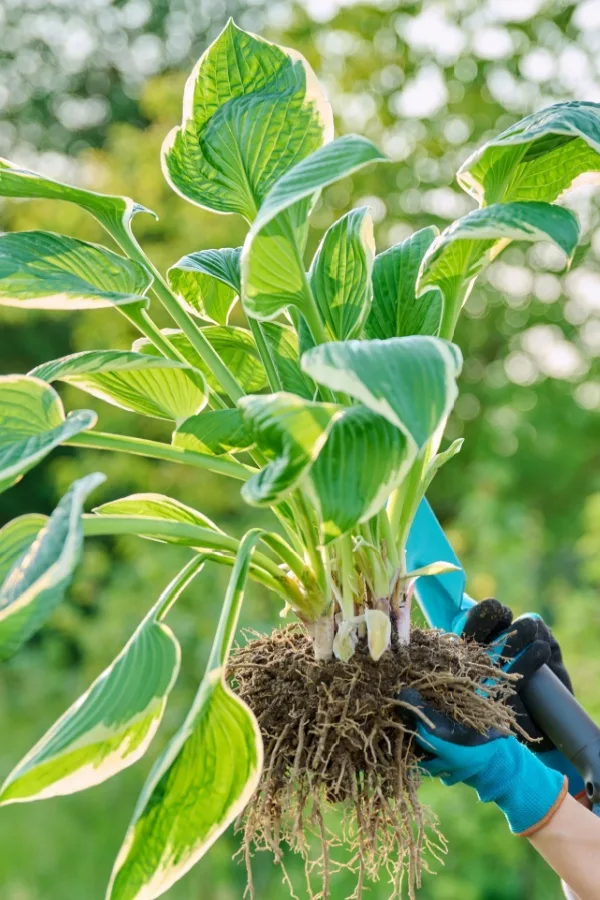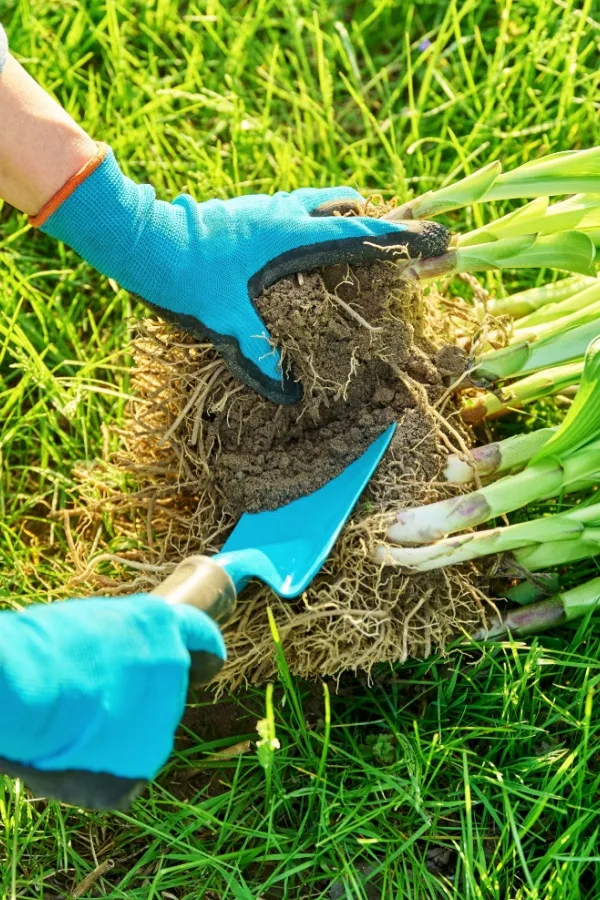Did you know that although summer can be a difficult time for digging up and dividing most perennials, it happens to be one of the best times to divide and split overgrown hostas?
Hostas are one of the most popular perennial landscaping plants around. Not only are they low-maintenance and easy to care for, but they are one of the best foliage plants for adding color and texture to the shadier locations on your property.
But one of the biggest issues for hostas is that they start to overgrow their space in just a short amount of time. In addition, their lush foliage can start to get rather tattered and worn out by the time the middle of summer rolls around. This is especially the case for larger hosta plants.

When this happens, the best thing to do is divide the plants. And as it turns out, there are a lot of advantages to doing just that in the summer.
You can certainly divide hostas really at any time during the spring or fall months as well. However, both time frames come with their own challenges and issues – none of which occur when you divide them during the summer.
Advantages Of Dividing Hostas In The Summer
During the spring, hosta plants have yet to grow to their full potential. There is no way of knowing exactly how large the plants are going to get by the time summer rolls around. This can leave you guessing at just how much to remove and divide in the spring.
By late summer or fall, the leaves on most hostas plants have started to get damaged by pests or insects. In addition, leaves start to die back and fall off. This once again leaves you guessing just how much of the plant needs to be cut back. See our article: How To Keep Insects Off Your Hostas This Year
But when you divide overgrown hostas in the summer, there is no guesswork involved at all. The plants have already filled out with plenty of lush foliage. This allows you to easily see the size of the hosta as well as the flowerbed space so you know exactly how much of the plant you need to remove.
Hostas Can Handle The Heat
Even though it might seem like the heat of the summer months might be an issue for dividing hosta plants, that isn’t the case at all. Hostas are actually extremely durable and hardy.

Instead of growing from roots, hostas grow from rhizomes. These rhizomes are clumps that are very tough and can quickly get re-established in any condition – even in the heat of summer.
Also, by dividing and replanting your hostas in the summer, the plants have plenty of time to establish back and rejuvenate with brand new, beautiful growth. In fact, just a few weeks after planting, new growth will emerge, also allowing the plants to set good roots for next year.
How To Divide Overgrown Hostas In The Summer
Plan Ahead
Before you begin dividing your overgrown hostas in the summer, it’s always best to know what you will be doing with the extra plants you will be creating. You can actually get quite a few new plants when dividing even a single large hosta.
It’s best to transplant the cuttings on the same day you divide them. This allows them to recover and establish better during the heat of the summer.
Plants can go directly back into the ground to fill in other flowerbed or landscape spaces – but they are also great for planting into pots and containers. Or, consider giving potted hostas to your friends or neighbors as a gift – all at no extra cost to you!

Start By Cutting Back The Leaves – How To Divide Overgrown Hostas In The Summer
The best part of dividing hostas in the summer is just how easy it is! All you really need to divide overgrown hostas in the summer is a shovel and a pair of clippers or hedge shears.
The first step is to cut back the foliage. While this might sound drastic, all of the foliage is more than likely to die back once you dig up and divide them. With that in mind, cutting the leaves first allows you to get a better sense of where the root structure is of each plant. In addition, it makes the splitting process that much easier.
Using a pair of hedge shears or pruners, cut the leaves back to one to two inches above the ground. Don’t cut plants all the way back. Leaving a few inches allows you to see the roots better as well as help you locate plants after replanting.
Digging Up The Overgrown Hosta – How To Divide Overgrown Hostas In The Summer
Now that the leaves are off, you are ready to dig up the root structure. Start by digging around the outer edge of the plant. Use a sharp shovel to dig down a few inches away from the actual perimeter of the plant.

Once you have circled around the entire plant, you can now dig deeper until you are able to lift the plant out. Since the rhizomes don’t grow as deep as traditional roots, you can dig up most plants easily using this method. If the hosta is so overgrown that it is impossible to remove it in one piece, simply dig it out in sections.
Once all of the root structure is out of the ground, turn the hosta upside down. This will make it much easier to dig through the roots for cutting purposes.
Splitting – How To Divide Overgrown Hostas In The Summer
Now it’s time to split the plant into pieces. Using a shovel or a garden knife, cut the large mass into pieces. Make sure that each section contains at least a few inches of roots. Affiliate Product Link: The Original Hori Hori Knife
Don’t worry about damaging the roots as you cut. As mentioned earlier, hosta plants are very resilient and can handle being split without any major issues.
Creating a cutting that has at least two to three-inch pieces will provide you with a new plant that fills out with around 12 inches of new growth. Cuttings the size to four to six inches will allow for new plants that fill out to about two feet of mature growth.

You can also make larger divisions. Keep in mind, the larger the cuttings, the sooner you will need to re-divide plants again in the future.
Transplanting New Divisions – How To Divide Overgrown Hostas In The Summer
When transplanting, create a hole that is a few inches wider and one inch deeper than the root mass. Inside the hole, add equal amounts of soil and compost. The compost will help power the new plants and help them readjust quickly.
Place the hosta division in the hole and backfill. Water the plants well and continue to water every couple of days until new foliage growth appears.
If you can’t transplant on the same day, keep the cuttings in a cool, dark location. As long as you keep the plants moist they should be able to survive for a few weeks. However, the sooner you plant, the quicker and better they can get established and create new growth.
If you’re in search of a few more ways to add beauty to your landscape, check out these 5 Must Have Flowering Shrubs That Will Fill Your Landscape With Color!
Here’s to dividing overgrown and unruly hosta plants in the summer – and enjoying their beauty year after year!
Simple Garden Life
Follow Our Facebook Page For Even More Great Tips! Simple Garden Life Facebook Page
Simple Garden Life is a website dedicated to keeping gardening fun, simple and enjoyable! We publish two new articles each week along with a new garden podcast episode every two weeks. This article may contain affiliate links.
